e.hormone
Books
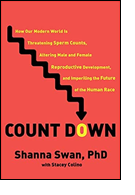 Count Down: How Our Modern World Is Threatening Sperm Counts, Altering Male and Female Reproductive Development, and Imperiling the Future of the Human Race
Count Down: How Our Modern World Is Threatening Sperm Counts, Altering Male and Female Reproductive Development, and Imperiling the Future of the Human Race
Shanna H. Swan, Stacey Colino
Scribner
(2021)
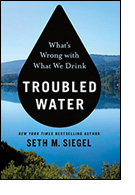 Troubled Water: What's Wrong with What We Drink
Troubled Water: What's Wrong with What We Drink
Seth M. Siegel
Thomas Dunne Books
(2019)
Ecosystem and potential human health effects of estrogen and estrogen-like compounds in surface water from birth control pills, herbicides and pesticides, certain plastic products, cosmetics, and industrial solvents.
 Estrogens in the Environment (PDF)
Estrogens in the Environment (PDF)
John A. McLachlan (Editor)
Elsevier/North-Holland
(1979)
Proceedings of the Symposium on Estrogens in the Environment Raleigh, North Carolina, U.S.A., September 10-12,1979. Volumes cover such topics as: Clinical Chemistry and Chemical Toxicology of Metals, Progress in Genetic Toxicology, Chemical Toxicology of Food, Toxicology and Occupational Medicine, and Estrogens in the Environment.
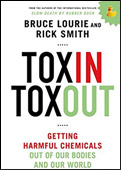 Toxin Toxout: Getting Harmful Chemicals Out of Our Bodies and Our World
Toxin Toxout: Getting Harmful Chemicals Out of Our Bodies and Our World
Bruce Lourie (Author), Rick Smith (Author)
St. Martin's Griffin
(2015)
From Booklist: *Starred Review* The authors of the best-selling Slow Death by Rubber Duck (2010) return to answer the most common question raised by that book’s fans: “How do we get all these toxins out of our bodies?” In a collegial, straightforward style, Lourie and Smith quiz doctors and researchers, converse with wellness activists, visit organic stores and companies and, most interestingly, engage in a variety of experiments to track how the more than 80,000 synthetic chemicals in use today got into our bodies and what it will take to get them out.
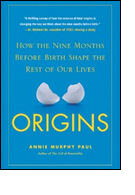 Origins: How the Nine Months Before Birth Shape the Rest of Our Lives
Origins: How the Nine Months Before Birth Shape the Rest of Our Lives
Annie Murphy Paul (Author)
Free Press
(2010)
"Science writer Paul (The Cult of Personality) segues between pondering her own second pregnancy and the developing literature on fetal origins in this fascinating study of the prenatal period, what one scientist calls the staging ground for well-being and disease in later life. Drawing upon current research and interviews with experts in this burgeoning field, Paul explores such varied topics as diet and nutrition, stress, environmental toxins, exercise, and alcohol use. She cites some frightening if by now familiar discoveries, such as the existence of 200 industrial chemicals that can be found in babies' umbilical cords, as well as some unusual findings, such as the discovery that women who consumed a daily dose of chocolate during their pregnancies gave birth to babies who smiled more at six months. She also exposes links between low birth weight and later cardiovascular disease, and muses upon the possibility that a dietary supplement might one day protect future children from cancer.
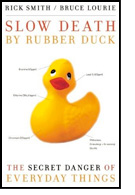 Slow Death by Rubber Duck: The Secret Danger of Everyday Things
Slow Death by Rubber Duck: The Secret Danger of Everyday Things
Rick Smith (Author), Bruce Lourie (Author)
Counterpoint
(2010)
Pollution is no longer just about belching smokestacks and ugly sewer pipes—now, it’s personal. The most dangerous pollution, it turns out, comes from commonplace items in our homes and workplaces. To prove this point, for one week authors Rick Smith and Bruce Lourie ingested and inhaled a host of things that surround all of us. Using their own bodies as the reference point to tell the story of pollution in our modern world, they expose the miscreant corporate giants who manufacture the toxins, the weak-kneed government officials who let it happen, and the effects on people and families across the globe. This book—the testimony of their experience—exposes the extent to which we are poisoned every day of our lives, from the simple household dust that is polluting our blood to the toxins in our urine that are created by run-of-the-mill shampoos and toothpaste. Ultimately hopeful, the book empowers readers with some simple ideas for protecting themselves and their families, and changing things for the better.
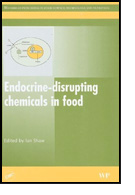 Endocrine Disrupting Chemicals in Food
Endocrine Disrupting Chemicals in Food
I. Shaw
CRC Press
(2009)
The rise in the incidence of health problems, such as reproductive disorders and testicular and breast cancer, has been linked by some to endocrine-disrupting chemicals in the environment. The role of food in transmitting these chemicals is uncertain and a topic of considerable research. This important book addresses key topics in this area. Opening chapters review the effects of endocrine-disrupting chemicals on health and behavior. The second part of the book covers the origins, analysis, and risk assessment of endocrine disruptors in food products. Concluding chapters concentrate on particular endocrine-disrupting chemicals.
 Reproductive Health and the Environment (Environmental Science and Technology Library)
Reproductive Health and the Environment (Environmental Science and Technology Library)
P. Nicolopoulou-Stamati (Editor), L. Hens (Editor), C.V. Howard (Editor)
Springer
(2010)
This book reviews recent trends and developments in the study of the impact that the environment has on human reproduction. It thoroughly examines these issues, using the most modern techniques and methods available, to analyze the manner in which both male and female fertility can be affected and assessed. Coverage examines such diverse factors as toxic environmental contaminants, air pollution, and exposure to medical drugs.
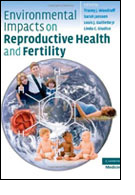 Environmental Impacts on Reproductive Health and Fertility
Environmental Impacts on Reproductive Health and Fertility
Tracey J. Woodruff PhD MPH (Editor),
Sarah J. Janssen MD PhD (Editor),
Louis J. Guillette Jr Jr PhD (Editor),
Linda C. Giudice (Editor)
Cambridge University Press
(2010)
Many reproductive and developmental health problems are caused by exposure to chemicals that are widely dispersed in our environment. These problems include infertility, miscarriage, poor pregnancy outcomes, abnormal fetal development, early puberty, endometriosis, and diseases and cancers of reproductive organs. The compelling nature of the collective science has resulted in recognition of a new field of environmental reproductive health. Focusing on exposures to environmental contaminants, particularly during critical periods in development and their potential effects on all aspects of future reproductive life-course, this book provides the first comprehensive source of information bringing together the arguments that are spread out among various scientific disciplines in environmental health, clinical and public health fields. It provides a review of the science in key areas of the relationship between environmental contaminants and reproductive health outcomes, and recommendations on efforts toward prevention in clinical care and public policy.
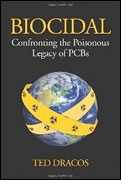 Biocidal: Confronting the Poisonous Legacy of PCBs
Biocidal: Confronting the Poisonous Legacy of PCBs
Theodore Michael Dracos (Author)
Beacon Press
(2010)
In Biocidal, investigative journalist Ted Dracos tells the full story of PCBs for the first time, starting with the chilling chronicle of how the chemical industry manipulated regulatory agencies and scientific findings for decades to continue to reap huge profits, despite their knowledge of the threats posed by their "magic fluid." Dracos draws on extensive research to document the connection between PCBs and catastrophic human illness, presenting the latest science as studies draw ever more disturbing links between PCBs and continued health impacts ranging from cancer and autism to immunosuppression and reproductive abnormalities.
